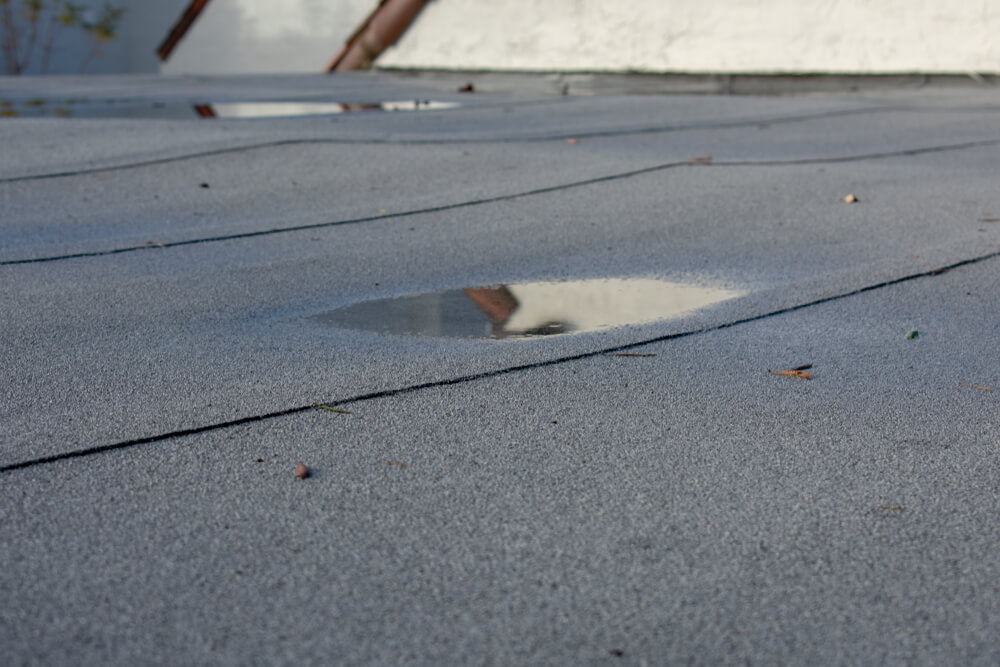Flat roofs are favored in both commercial and residential architecture for their sleek, modern look and space efficiency. Yet, a frequent concern associated with this roof style is its water drainage capability. Since these roofs have only a slight incline, it is essential to implement effective drainage solutions to avoid the accumulation of water, which can cause leaks and compromise structural integrity. This article explores the diverse strategies and mechanisms that ensure these roofs can efficiently handle rainwater, keeping buildings dry and protected.
What Constitutes a Flat Roof?

Contrary to popular belief, flat roofs are not perfectly flat. They have a slight incline, typically between 1/4 to 1/2 inch per foot, allowing for water drainage. This slight slope is imperceptible to the eye but critical for water management.
The Importance of Efficient Drainage
Effective water drainage is essential for the longevity of flat roofs. Standing water can degrade roofing materials, lead to leaks, and encourage the growth of mold and algae. Moreover, excessive water accumulation can strain the roof structure due to the weight of the water, especially after heavy rainfall or snowmelt.
How Flat Roofs Manage Water Drainage
Internal Drainage Systems
One of the primary methods for draining water on flat surfaces is through internal drainage systems. These are installed at strategic points on the roof and are connected to pipes that run through the building’s interior, leading water away from the roof and discharging it at a safe location. Internal drains are equipped with strainers to prevent debris from clogging the pipes, ensuring a smooth flow of water. This method is aesthetically pleasing since the drainage system is largely hidden from view. Scuppers Scuppers are openings on the edge of the roof that allow water to exit directly off the side. They are often used in combination with a slight slope guiding water towards them.
Scuppers
can be an effective drainage solution, particularly in areas with moderate rainfall. They also serve as an overflow mechanism, providing an additional layer of protection against water accumulation.
Gutters and Downspouts
Similar to sloped roofs, flat roofs can also utilize gutters and downspouts to manage rainwater. Gutters are installed along the edges of the roof, collecting water and directing it to downspouts, which then carry the water down and away from the building. This system is especially effective in regions with heavy rainfall, ensuring that water is quickly and efficiently removed from the roof surface.
Tapered Insulation Systems
Tapered insulation systems are an innovative solution that combines insulation with water management. By installing insulation in a manner that creates a slope towards drainage points, these systems ensure efficient water flow while also enhancing the roof’s thermal performance. This dual-function approach makes tapered insulation systems a popular choice for new construction and roof replacement projects.
Maintenance: Key to Effective Drainage
Regardless of the drainage method employed, regular maintenance is crucial to ensure the system remains effective. This includes clearing debris from drains, scuppers, and gutters, inspecting for and repairing any damage, and ensuring that water flow is not obstructed. Regular maintenance helps prevent leaks, extends the lifespan of the roof, and ensures that the roof can effectively manage water, safeguarding the building from water-related damage.
Conclusion

Flat roofs possess distinctive traits that demand tailor-made solutions for water drainage. By employing internal drainage systems, scuppers, gutters, and tapered insulation, these structures can proficiently channel water away, averting any build-up and safeguarding the building’s integrity. The ongoing effectiveness of these drainage components hinges on consistent maintenance.
Recognizing and catering to the unique requirements of flat roofs allows homeowners and building managers to not only ensure their durability and longevity but also maintain their properties in pristine, leak-free condition. For more information or assistance with your flat roofing needs, feel free to contact DryTech Exteriors today. Our team is dedicated to providing expert advice and solutions tailored to your specific roofing challenges.




